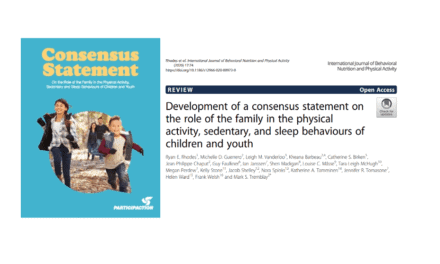HALO alumnus Dr. Allana LeBlanc is lead author on a paper, “The Ubiquity of the Screen: An Overview of the Risks and Benefits of Screen Time in Our Modern World,” that was recently published in the Translational Journal of the American College of Sports Medicine. Citation details and a summary of the paper are below.
LeBlanc AG, Gunnell KE, Prince SA, Saunders TJ, Barnes JD, Chaput JP. The Ubiquity of the Screen: An Overview of the Risks and Benefits of Screen Time in Our Modern World. Transl J Am Coll Sports Med. 2017;2(17):104-13.
Click here to read the paper in full for free.





